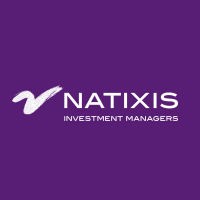Insurance Asset Management Update: Q1 2022
Top Thought Leadership on Insurance Asset Management.
Top of mind for most insurance company executives will be the implication of the EU's Solvency II framework and now, post-Brexit, the overhaul of insurance sector regulation by the UK government. This divergence in regulation will be seen by many as an early test of just how much freedom from EU regulation and what tangible benefits might actually flow from the UK setting its own rules. Some far-reaching proposals from the Association of British Insurers (ABI) in areas of risk margin, matching adjustment and reduced reporting requirements, seek to free up £95 billion in capital.
Several papers in this selection focus on the implications of Solvency II regulation and how these might impact European insurers going forward. Others highlight opportunities for insurance companies in fixed income and other asset classes, while there is a good selection of insurance sector outlooks from leading international consultancy groups.

Solvency II Review: Adjusting the dial, but no revolution (BNP Paribas AM, 2022)
BNP Paribas AM summarises the proposed new rules designed to strengthen the robustness and resilience of the insurance sector to financial sector shocks and volatility. Climate Change scenario analysis is also applied for the first time.
Four Insurance Portfolio Allocation Themes (M&G Investments, 2022)
For compliance reasons, this paper is only accessible in certain geographies
M&G Investments outlines four allocation themes they consider should be uppermost for consideration in insurance company portfolios.
Solvency II Review: Promising start, but is it radical enough? (Invesco, 2022)
For compliance reasons, this paper is only accessible in certain geographies
Invesco investigates the regulatory update proposed to the Solvency II framework by the European Commission. The UK insurance sector review is also starting, which may lead to a divergence among European insurers. Invesco also suggests several interesting strategies across a range of bonds classes for insurance companies to consider.
Insurance Perspectives: Considerations for EM debt (MetLife IM, 2022)
MetLife IM outlines its reasoning for proposing emerging market debt as a key portfolio allocation for insurance companies, highlighting favourable risk-adjusted yields and portfolio diversification benefits as part of a range of structures and strategies that insurance companies might find appealing.
Global Insurance Market Trends Report (OECD, 2022)
This OECD report offers insights into the performance and underlying health of the global insurance industry with data gathered from 59 jurisdictions.
Global Insurance Report 2022 (McKinsey & Company)
McKinsey’s first Global Insurance Report looks at the challenges and opportunities facing the industry.
2022 Global Insurance Outlook (EY)
EY’s Global Insurance Outlook looks at some of the key trends that are reshaping the industry; ecosystems and open insurance, workforce transformation, and sustainability.
2022 Insurance Industry Outlook (Deloitte)
In Deloitte’s insurance industry outlook, they highlight the transformation that is affecting the industry as it recovers and adapts to post-pandemic recovery.
Cyber Event Risks in Capital Markets and Insurers’ Portfolios (Capco, 2021)
Extreme cyber risks are becoming more frequent occurrences in capital markets, and the authors propose a framework that might be applied to internal risk models of insurance companies.
Systemic Risks and the Insurance Sector (Chartered Insurance Institute, 2021)
This paper from the Chartered Insurance Institute (CII) looks at the role the industry might play against systemic risks that are so large that traditional risk transfer mechanisms become unsuitable.
Trends in North American Life Insurance & Annuity Pricing Practices (WTW, 2022)
For compliance reasons, this paper is only accessible in the United States
This WTW survey focuses on the pricing assumptions used in the North American life insurance and annuities markets.





